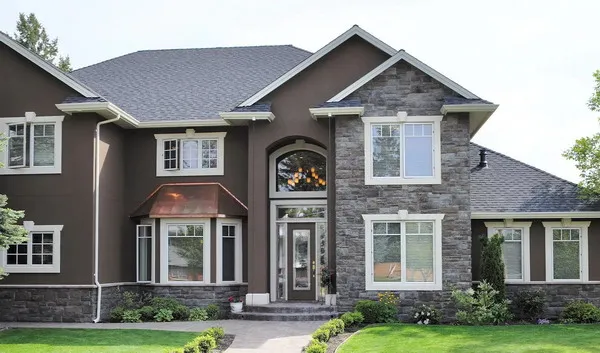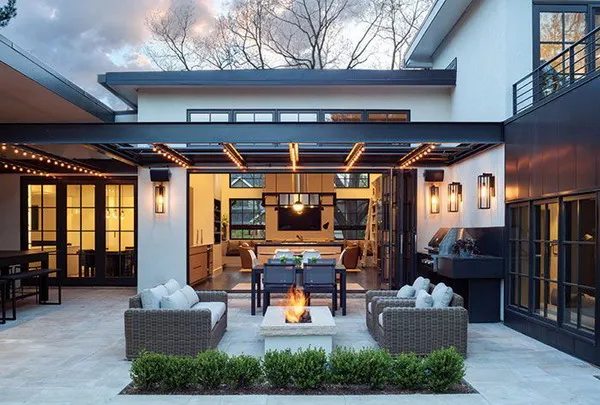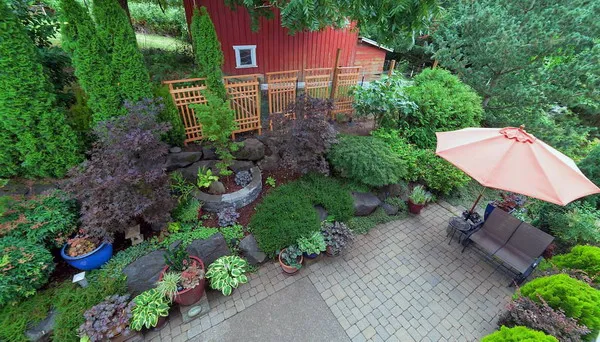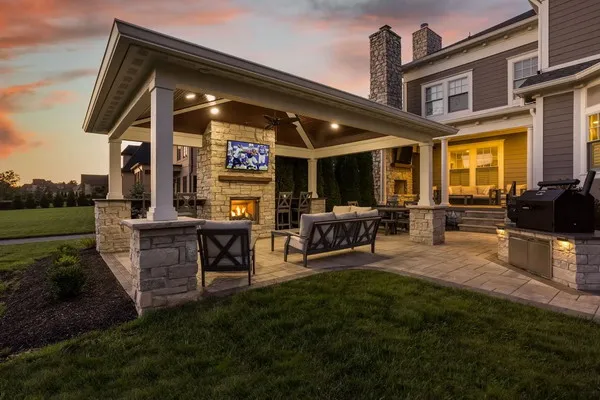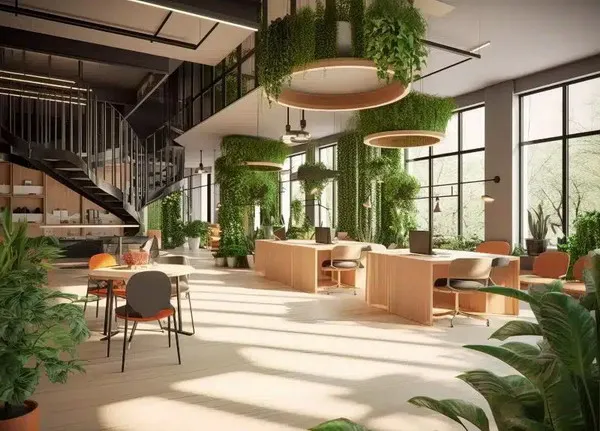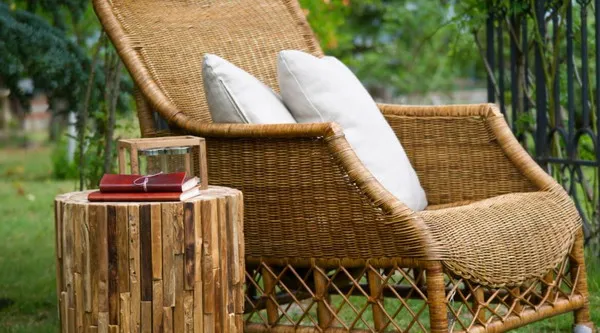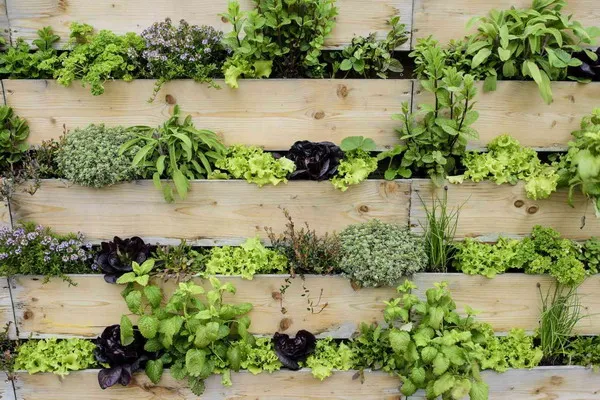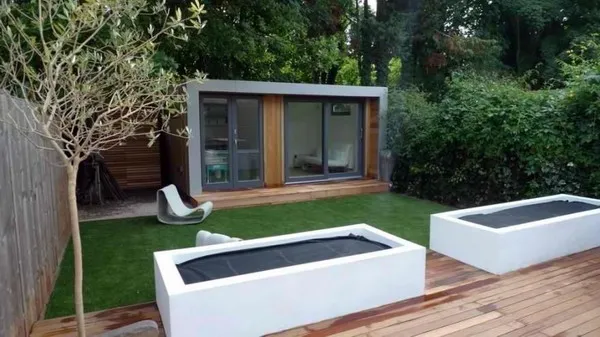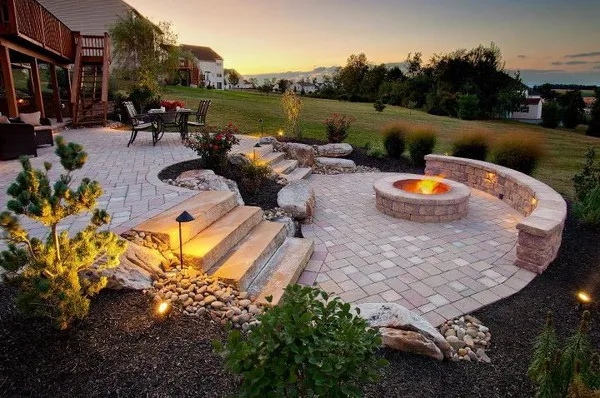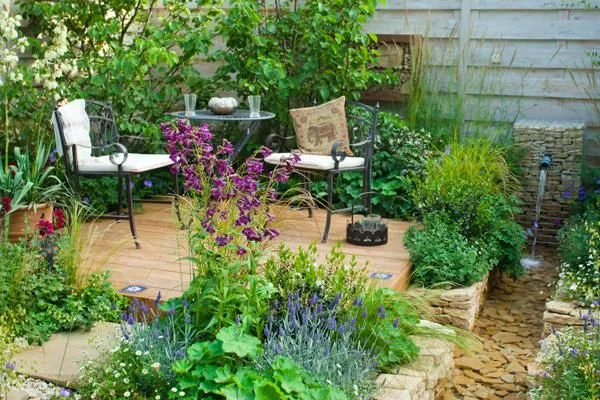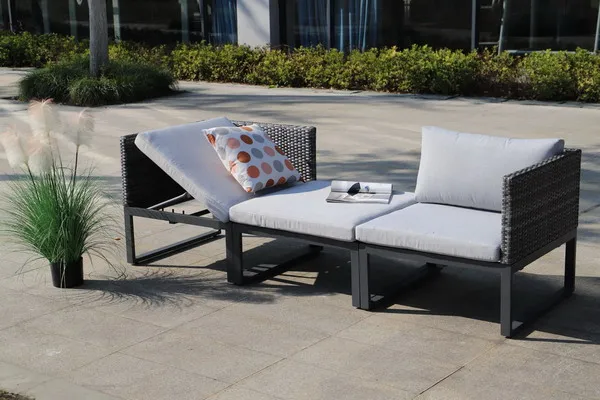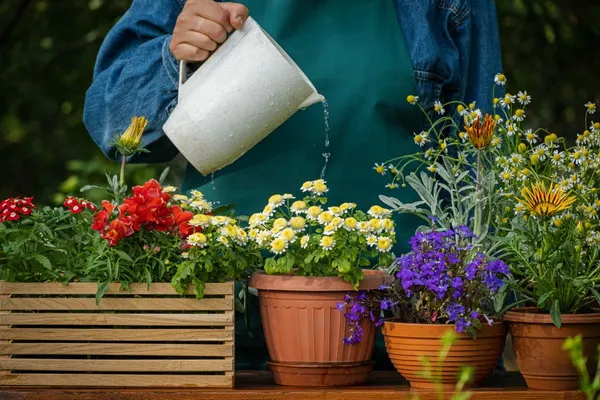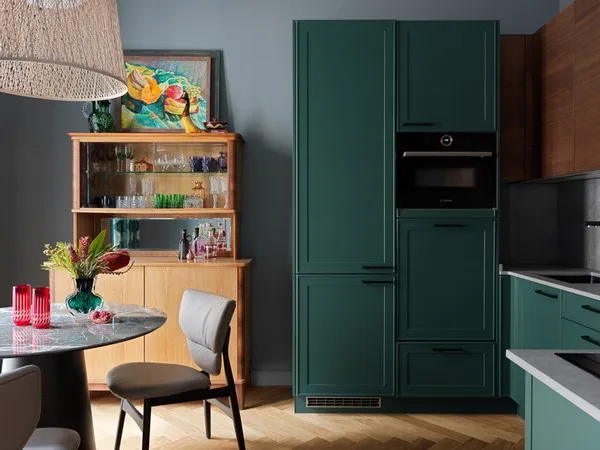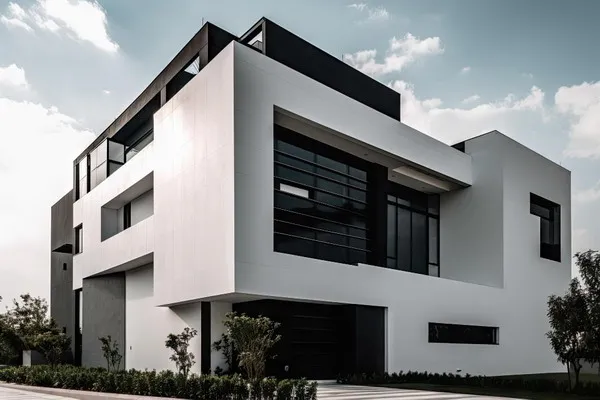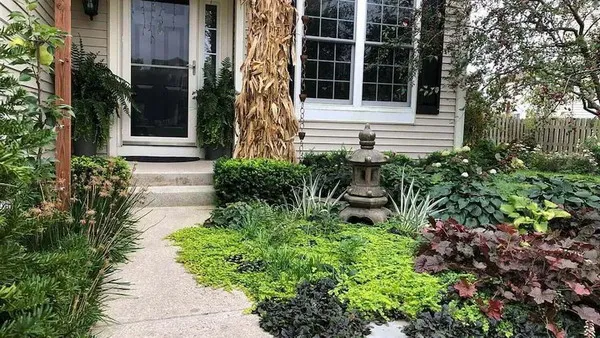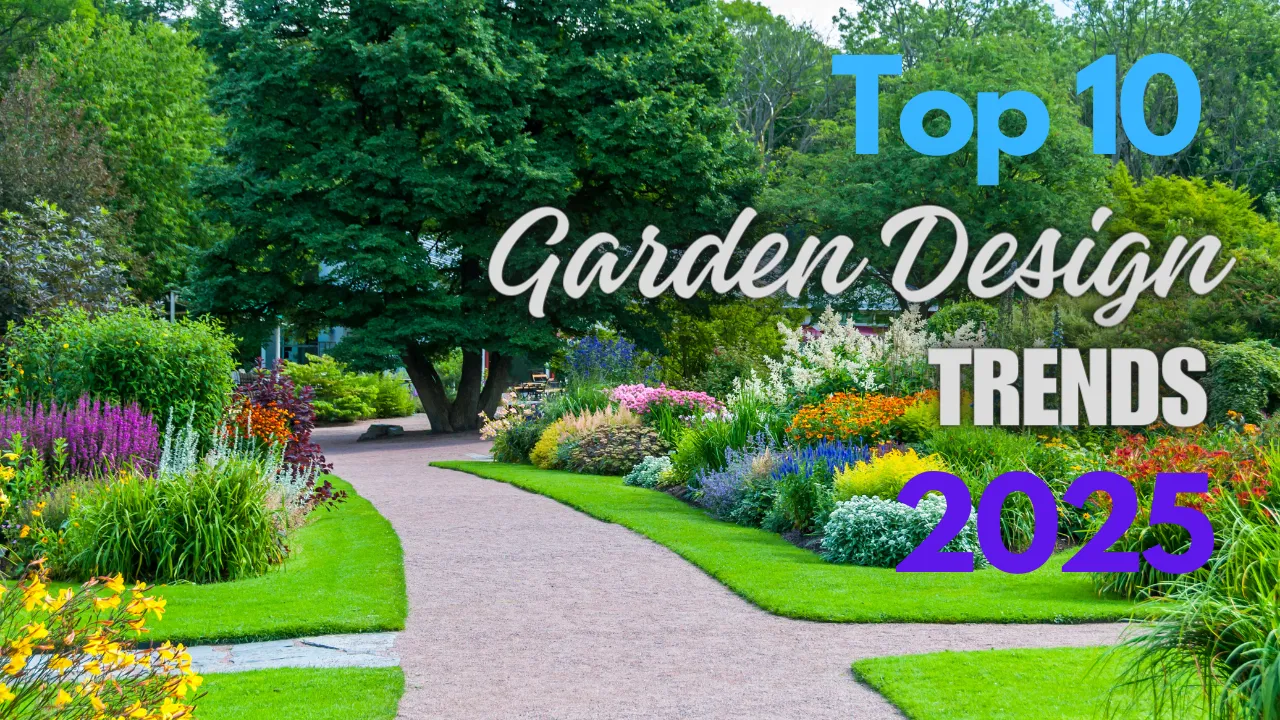Exterior design trends 2025
Last Updated on February 25, 2024 by Mutiara
Predicting specific design trends for the future can be a bit tricky, as they often evolve based on various factors such as cultural shifts, technological advancements, and environmental concerns.
Exterior design trends 2025 are characterized by a harmonious blend of sustainability, technology, and aesthetic innovation. Architects and homeowners alike are embracing a forward-thinking approach that not only enhances the visual appeal of buildings but also prioritizes environmental responsibility and functional efficiency.
Here are some potential exterior design trends that could gain traction in 2025:
1. Embracing Outdoor Living Spaces: A Key Trend in Exterior Design for 2025
In 2025, one of the prominent trends shaping exterior design is the emphasis on outdoor living spaces. Homeowners are increasingly seeking to extend their living areas beyond the confines of their homes, creating inviting and functional outdoor spaces for relaxation, entertainment, and recreation.
Outdoor living spaces have evolved from simple patio setups to fully equipped outdoor rooms complete with seating areas, dining spaces, cooking facilities, and even entertainment systems. Whether it’s a cozy backyard retreat or a sprawling deck with panoramic views, the focus is on creating seamless transitions between indoor and outdoor living areas.
The trend towards outdoor living spaces reflects a desire to reconnect with nature, maximize living space, and enhance overall well-being. These versatile outdoor areas offer opportunities for relaxation and socializing, allowing homeowners to make the most of their outdoor environments year-round.
From comfortable seating arrangements to weather-resistant furnishings and outdoor rugs, there’s a wide range of options available to suit every taste and lifestyle. By embracing outdoor living spaces, homeowners can create a harmonious blend of indoor comfort and outdoor beauty, transforming their homes into inviting retreats for family and friends to enjoy.
2. Sustainable Landscaping: An Eco-Friendly Approach to Exterior Design
In 2025, sustainability is a driving force behind exterior design trends, with homeowners and designers alike prioritizing eco-friendly practices and materials. Sustainable landscaping, in particular, is gaining traction as a key trend in exterior design, offering a holistic approach to creating beautiful and environmentally responsible outdoor spaces.
From native plantings and drought-tolerant gardens to rainwater harvesting systems and permeable paving, sustainable landscaping encompasses a range of practices aimed at reducing environmental impact and promoting biodiversity. By choosing locally sourced materials, minimizing water usage, and implementing energy-efficient lighting, homeowners can create outdoor environments that are not only visually stunning but also ecologically sound.
Sustainable landscaping also has practical benefits, such as reducing water consumption, improving soil health, and attracting beneficial wildlife. By embracing sustainable practices in their outdoor spaces, homeowners can create landscapes that are both beautiful and resilient, ensuring long-term enjoyment and environmental stewardship for generations to come.
3. Harnessing the Power of Smart Outdoor Technology in Exterior Design
In 2025, the integration of smart technology is revolutionizing exterior design, offering homeowners unprecedented control and convenience over their outdoor spaces. From automated irrigation systems and outdoor lighting to connected entertainment systems and security features, smart outdoor technology is transforming the way we interact with and experience our outdoor environments.
Smart outdoor technology allows homeowners to remotely control and monitor their outdoor spaces via smartphone apps, voice commands, or centralized control systems. This level of connectivity and automation not only enhances convenience but also improves energy efficiency, security, and overall comfort.
In addition to practical benefits, smart outdoor technology also offers opportunities for creativity and customization, allowing homeowners to create personalized outdoor experiences tailored to their specific needs and preferences. Whether it’s adjusting lighting levels for ambiance, scheduling irrigation based on weather conditions, or streaming music to outdoor speakers, the possibilities are virtually endless.
By harnessing the power of smart outdoor technology, homeowners can create outdoor spaces that are not only functional and efficient but also immersive and enjoyable, enhancing the overall quality of outdoor living.
4. Biophilic Design: Bringing the Outdoors In
Biophilic design is a prominent trend in exterior design for 2025, reflecting a growing appreciation for the connection between humans and nature. Rooted in the idea that incorporating natural elements into the built environment can enhance well-being and productivity, biophilic design seeks to create spaces that foster a sense of harmony and balance with the natural world.
In exterior design, biophilic principles are applied through the use of natural materials, organic shapes, and elements that evoke the sights, sounds, and textures of the outdoors. From living walls and green roofs to natural stone accents and water features, biophilic design elements can be incorporated into outdoor spaces to create a sense of tranquility and rejuvenation.
Biophilic design also emphasizes the importance of natural light and views to the outdoors, encouraging the integration of large windows, skylights, and outdoor living areas that blur the boundaries between indoor and outdoor spaces. By bringing the outdoors in, homeowners can create environments that promote health, happiness, and connection to the natural world.
5. Durable Outdoor Materials: The Foundation of Functional and Stylish Exterior Spaces
In 2025, durability is a key consideration in exterior design, with homeowners prioritizing materials that can withstand the rigors of outdoor living while maintaining their aesthetic appeal. From decking and paving to outdoor furniture and accessories, durable outdoor materials are essential for creating functional and stylish exterior spaces that stand the test of time.
Materials such as composite decking, porcelain pavers, and powder-coated aluminum furniture offer durability without sacrificing style, making them ideal choices for outdoor environments. These materials are resistant to fading, scratching, and weather damage, ensuring long-lasting performance and low maintenance requirements.
In addition to durability, outdoor materials are also chosen for their ability to complement the architectural style of the home and enhance the overall design aesthetic. Whether it’s a contemporary urban oasis or a rustic country retreat, the right outdoor materials can elevate the look and feel of any exterior space, creating a cohesive and inviting environment for outdoor living and entertaining.
By investing in durable outdoor materials, homeowners can create exterior spaces that are not only beautiful and functional but also built to withstand the elements and stand the test of time.
6. Vertical Gardens: Elevating Exterior Design with Greenery
Vertical gardens, also known as living walls, are becoming increasingly popular in exterior design as homeowners seek innovative ways to incorporate greenery into outdoor spaces. In 2025, vertical gardens are poised to take center stage as a key trend in exterior design, offering a unique and eye-catching way to introduce plants and vegetation into urban environments.
Vertical gardens utilize vertical space to create lush and verdant displays of plants and foliage, transforming ordinary walls and structures into vibrant living artworks. From cascading vines and ferns to colorful flowers and herbs, the possibilities for vertical gardens are endless, allowing homeowners to create customized green spaces that reflect their personal style and preferences.
In addition to their aesthetic appeal, vertical gardens offer a range of practical benefits, including improved air quality, noise reduction, and temperature regulation. These living walls also provide habitat for beneficial insects and wildlife, promoting biodiversity and ecological balance in urban settings.
Whether installed on exterior walls, fences, or freestanding structures, vertical gardens add a touch of natural beauty to any outdoor space, creating a serene and tranquil environment for relaxation and enjoyment. By embracing vertical gardens, homeowners can elevate their exterior design and bring the beauty of nature to even the most urban environments.
7. Minimalist Landscaping: Simplifying Exterior Design with Clean Lines and Open Spaces
Minimalist landscaping is a growing trend in exterior design for 2025, reflecting a desire for simplicity, elegance, and functionality in outdoor spaces. Characterized by clean lines, geometric shapes, and a limited color palette, minimalist landscaping embraces the principles of less is more, creating serene and uncluttered environments that evoke a sense of calm and tranquility.
In minimalist landscapes, the focus is on creating a harmonious balance between hardscape elements such as paving, decking, and stone, and softscape elements such as grasses, shrubs, and trees. By carefully selecting and arranging these elements, homeowners can create outdoor spaces that are both visually striking and low maintenance, allowing for maximum enjoyment with minimal upkeep.
Minimalist landscaping is also characterized by an emphasis on open spaces and negative space, creating a sense of openness and expansiveness that enhances the overall feeling of serenity and relaxation. By simplifying exterior design and embracing minimalist principles, homeowners can create outdoor spaces that are timeless, elegant, and effortlessly chic.
8. Energy-Efficient Outdoor Lighting: Illuminating Exterior Spaces with Style and Sustainability
Energy-efficient outdoor lighting is a key trend in exterior design for 2025, as homeowners seek to enhance the beauty and functionality of their outdoor spaces while reducing energy consumption and environmental impact. From LED fixtures to solar-powered lights, energy-efficient outdoor lighting offers a range of options for illuminating exterior spaces with style and sustainability.
LED lighting, in particular, has become increasingly popular for outdoor applications due to its long lifespan, low energy consumption, and versatility. LED fixtures come in a variety of styles and designs, allowing homeowners to create customized lighting schemes that enhance the architectural features of their homes and landscape elements.
Solar-powered lights are another eco-friendly option for outdoor lighting, harnessing the power of the sun to illuminate exterior spaces without relying on traditional electricity sources. Solar lights are easy to install and require no wiring, making them ideal for illuminating pathways, garden beds, and outdoor entertaining areas.
By embracing energy-efficient outdoor lighting, homeowners can enhance the beauty and functionality of their outdoor spaces while reducing energy costs and environmental impact. Whether it’s highlighting architectural features, creating ambiance, or improving safety and security, energy-efficient outdoor lighting is a stylish and sustainable solution for illuminating exterior spaces.
9. Water-Saving Garden Features: Promoting Sustainability in Exterior Design
Water-saving garden features are gaining popularity as homeowners seek to reduce water consumption and promote sustainability in exterior design. In 2025, water-saving garden features such as rain gardens, drip irrigation systems, and permeable paving are emerging as key trends in outdoor design, offering practical solutions for conserving water and enhancing the beauty of outdoor spaces.
Rain gardens are designed to capture and filter rainwater runoff from roofs, driveways, and other impervious surfaces, reducing stormwater pollution and replenishing groundwater supplies. These naturalistic gardens feature a mix of native plants and vegetation that thrive in moist conditions, creating habitat for wildlife and enhancing biodiversity.
Drip irrigation systems deliver water directly to the roots of plants, minimizing evaporation and runoff while ensuring efficient water use. By delivering water precisely where it’s needed, drip irrigation systems help to reduce water waste and promote healthy plant growth, even in dry or arid climates.
Permeable paving allows rainwater to soak into the ground, reducing runoff and preventing erosion while replenishing groundwater supplies. These porous surfaces are made from materials such as permeable concrete, gravel, and interlocking pavers, creating durable and aesthetically pleasing pathways, driveways, and patios.
By incorporating water-saving garden features into their outdoor spaces, homeowners can reduce water consumption, promote sustainability, and create beautiful and resilient landscapes that thrive in harmony with the natural environment.
10. Multifunctional Outdoor Furniture: Maximizing Space and Comfort in Exterior Design
Multifunctional outdoor furniture is a key trend in exterior design for 2025, as homeowners seek to maximize space and comfort in their outdoor living areas. From modular seating to convertible dining tables and storage benches, multifunctional outdoor furniture offers practical solutions for creating versatile and stylish outdoor spaces that adapt to changing needs and preferences.
Modular seating allows homeowners to configure outdoor seating arrangements to suit their specific requirements, whether it’s entertaining guests, lounging in the sun, or enjoying a cozy evening by the fire pit. These flexible seating options can be easily rearranged and reconfigured to accommodate different activities and social gatherings.
Convertible dining tables offer the convenience of dining and entertaining in outdoor spaces, with adjustable features that allow them to transform from coffee tables to dining tables with ease. These versatile tables are perfect for small outdoor areas where space is limited, providing functionality without sacrificing style or comfort.
Storage benches provide a practical solution for storing outdoor cushions, pillows, and accessories while doubling as seating for outdoor gatherings. These stylish and functional benches offer ample storage space and comfortable seating, making them ideal for maximizing space and comfort in outdoor living areas.
By embracing multifunctional outdoor furniture, homeowners can create outdoor spaces that are both stylish and functional, maximizing space and comfort while enhancing the overall enjoyment of their outdoor living areas.
